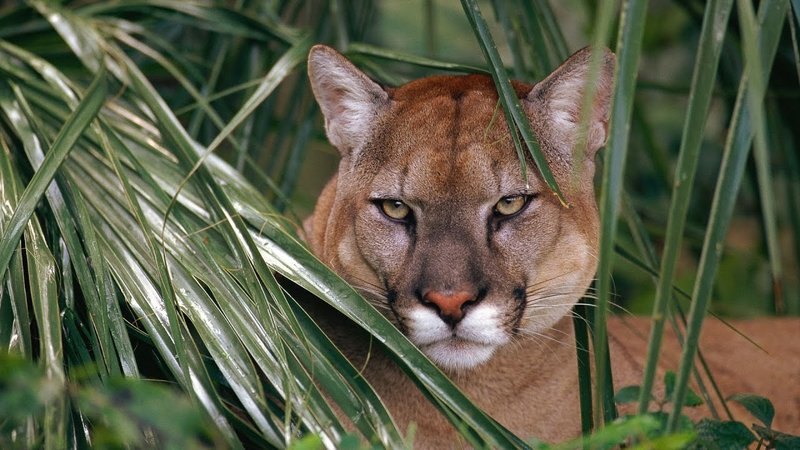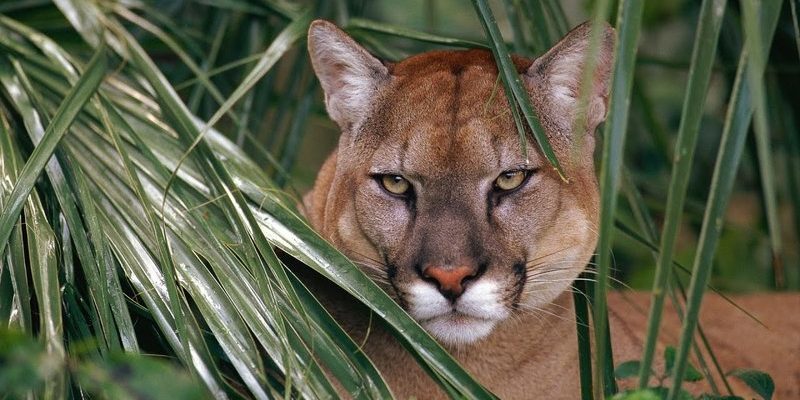
Understanding cougars isn’t just about recognizing their physical presence; it also involves clearing up the fog of misinformation that surrounds them. For instance, did you know that cougars have a range that covers much of North and South America? That’s right! They’re adaptable and thrive in various environments, but misconceptions often portray them as the stereotypical “wild beast” ready to pounce. So, let’s dive into some of the most common myths and see what’s real and what’s simply a figment of imagination.
Myth
You might be wondering if cougars are a threat to your safety. Here’s the thing: while they are predators, attacks on humans are incredibly rare. Statistically speaking, you’re far more likely to be involved in a car accident than to have a run-in with a cougar. These cats prefer to avoid humans, generally opting for solitude.
Cougars are opportunistic hunters. Their primary prey includes deer, smaller mammals, and sometimes even birds. They view humans as too large and not worth the risk. If you ever find yourself in cougar territory, being aware of your surroundings, making noise, and keeping pets leashed can reduce any potential interactions. It’s similar to how you’d handle meeting a bear—respectful distance is key!
Interestingly, when cougars do attack, it’s often because they feel threatened or cornered. Protecting their young or hastily defending their territory can lead to rare incidents. In general, understanding that cougars are not monsters lurking in your backyard can help ease fears surrounding these beautiful animals.
Myth
Many people think cougars are strictly wilderness animals, living only in the dense forests or rugged mountains. That notion couldn’t be further from the truth. Cougars are incredibly adaptable and have been spotted in areas close to urban environments. Think of them as the introverted neighbor who sometimes steps out to enjoy the world but prefers the quiet of their home.
In fact, cougars can thrive in diverse habitats, from deserts to forests to even mountainous regions. As urban development expands, cougars are increasingly found in areas on the outskirts of cities, often seeking food and shelter. This adaptability is a big part of their survival strategy.
What about your neighborhood? While it may seem unlikely, cougars can venture into suburban areas, especially when searching for food sources. It’s essential to be aware of local wildlife, especially if you live near wooded areas. Just like spotting a deer by the sidewalk, seeing a cougar isn’t out of the question.
Myth
When we think of big cats, many believe that all of them roar, like lions. This is another common misconception. Cougars are part of the larger family of felids but have a distinct vocal style. They can’t roar like their larger relatives. Instead, cougars make a variety of sounds that can be quite surprising!
You might hear them making a sound reminiscent of a person yelling or even a domestic cat meowing loudly—quite different from the roar of a lion echoing in the savannah. This vocalization serves various purposes, including communicating with other cougars during mating season or warning off rivals.
So, if you ever hear a strange sound in the woods, it might just be a cougar trying to communicate rather than a lion gearing up for a show!
Myth
It’s widely accepted that cougars are solitary creatures, often seen prowling alone. While this is true to an extent, there’s more nuance to their social structure. Cougars are generally solitary, but they can form loose associations, especially during mating season or when mothers are raising their young.
Female cougars will care for their cubs for about 1.5 to 2 years before the young venture off to establish their territories. These families can be quite affectionate, showcasing bonds that challenge the idea of complete solitude. During mating, males and females will interact, but once the mating season is over, they typically go their separate ways.
Understanding this social behavior adds depth to our perception of cougars. They may prefer solitude, but they also have complex social dynamics that contribute to their survival—just like humans, who can enjoy their alone time but also benefit from social connections.
Myth
You might think that all cougars look alike, but there’s a surprising variety in size. The truth is, cougars can vary significantly in weight and color depending on their region. Generally, adult cougars weigh between 80 to 200 pounds, with males being larger than females.
In the northern parts of their range, you might find larger cougars adapted to colder climates, while southern populations are usually smaller. Their fur colors can also vary, typically ranging from tawny to gray, and sometimes even appearing more reddish-brown.
This diversity is part of what makes cougars so remarkable. They’ve adapted to thrive in various environments, which shows nature’s creativity at play. So, the next time you hear about cougars, remember they come in different shapes and sizes—just like people!
Myth
Some people might think of cougars as mere predators with no real role in the ecosystem. In reality, cougars are a crucial part of maintaining balance in their habitats. As apex predators, they help regulate populations of herbivores like deer, which can overpopulate and lead to overgrazing if left unchecked.
By keeping prey populations in check, cougars indirectly support the health of the vegetation and contribute to biodiversity. It’s like those times when you need to prune a plant to help it grow better—removing some elements allows others to thrive.
Plus, cougars also play a role in food webs. Their presence affects the behavior of prey animals, which can influence the entire ecosystem. So, when you think of cougars, remember they’re not just big cats roaming the mountains; they are vital players in the environmental symphony.
Myth
While cougars do share a genetic link with domestic cats, they are far more than just larger versions of your house pet. Cougars have unique adaptations that suit their predatory lifestyle. For example, their muscular build, sharp retractable claws, and powerful legs allow them to leap great distances—sometimes up to 20 feet!
In contrast to domestic cats, which have been bred for companionship, cougars have evolved as solitary hunters. Their behavior, social structures, and natural instincts are all vastly different. It’s important to appreciate them as wild animals with their own needs and traits rather than simple household pets.
Think of cougars like the amazing athletes of the feline world—graceful, powerful, and equipped for survival. This distinction emphasizes the importance of respecting their wild nature and habitats.
So, there you have it! We’ve debunked some of the most common myths and misconceptions about cougars. These animals are not the mindless beasts tales sometimes depict; they are complex, intelligent creatures essential to their ecosystems. Understanding them can help reduce fear and promote conservation efforts, ensuring these magnificent cats continue to roam our landscapes.
Next time you hear a rumor about cougars, remember to take a step back and think about the facts. Like any wildlife, our understanding of cougars should be rooted in respect and appreciation for their vital role in nature. Whether they’re prowling through a national park or exploring the edges of a suburban area, cougars are a fascinating part of the world we share.

